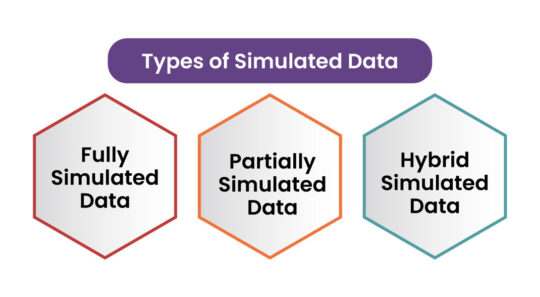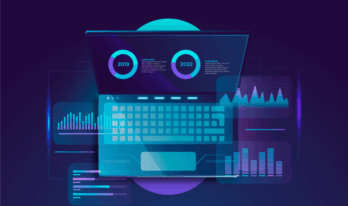As industries are embracing AI-driven solutions, high-quality data is becoming more and more in demand. This is happening because companies and researchers are looking for advanced AI models to increase decision-making and promote innovation. However, there are drawbacks to acquiring real-world data, including privacy concerns, biases, and expensive expenses.
A solution is provided by synthetic data, which creates fictional datasets that mimic real-world trends while protecting private information. Businesses can grow operations, test new technologies, and comply with data protection laws thanks to this creative method.
This blog post will explain what synthetic data is, how it functions, its advantages, and why it is revolutionizing different sectors.
Let’s dive in!
What is Synthetic Data?
Data created by computer algorithms or simulations and with artificial annotations is referred to as synthetic data. It is also known as simulated or dummy data. The use of this data as a substitute for real-world data is common. The patterns and features of real-world data are statistically replicated by simulated data, despite its artificial nature. This is a crucial feature of dummy data.
Synthetic data is a potent instrument that has many uses, but it is especially helpful in machine learning and artificial intelligence. It enables practitioners and academics to avoid the bias, incompleteness, and lack of variation that come with real-world data.
The ability of simulated data to be produced in huge volumes and with a variety of features is one of its key benefits; it enables the creation of varied data sets that can be utilized to train machine learning models. This is especially helpful when there is a lack of or difficulty obtaining real-world data.
One important application of dummy data is the defense of individual privacy. This data may be created by either creating data devoid of personally identifiable information (PII) or by extracting sensitive information, such as PII, from real-world data. Without endangering people's privacy, researchers may utilize the data to develop machine learning algorithms.
Synthetic Data Generation
Data scientists employ a variety of tools and methods for the creation of dummy data. It is produced by a computer and, without the use of real data points, closely mimics real-world data in terms of structure, pattern, and statistical characteristics.
Types of Simulated Data:
Three types of synthetic data exist:
Fully Simulated Data:
Doesn't contain any actual information. Because it is based on approximated genuine data properties, anonymity is guaranteed.
Partially Simulated Data:
Accuracy and privacy are balanced by partially manufactured data. It substitutes artificial values for private information.
Hybrid Simulated Data:
Combining fake and real data is known as hybrid simulated data. It strives for a balance between the two, improving both privacy and utility.
5 Vital Advantages of Dummy Data
#1 Data Diversity and Scalability
Biassed models and restricted insights result from real data's inability to cover all potential outcomes. It may be challenging to get enough real-world data, which might affect the models' accuracy.
Conversely, synthetic data ensures superior scalability and diversity of data. Industries may generate vast, diverse datasets that push the limits of innovation by relying on simulated data.
#2 Data Privacy and Security
Dummy data is closely related to data privacy. Without disclosing private information, businesses can use this data to generate alternative datasets that replicate the characteristics of actual data. It assists businesses with testing and analysis without putting sensitive information at risk.
Artificial intelligence has the potential to be very beneficial in sectors like healthcare and finance, where data security and privacy are crucial. For research and development, data scientists can utilize synthetic patient data without jeopardizing human privacy. Similarly, without utilizing real customer data, financial firms may simulate transactions and client behavior.
#3 Overcoming Data Limitations
Frequently, generated data might offer more samples to enhance the model's performance when data is insufficient. Because synthetic data is similar to data that is based on real-world patterns, it can help with the information shortage issue.
#4 Cost-effectiveness
Cost-effectiveness is among the main advantages of using dummy data.
Real data is costly to get, clean, and organize. In contrast to real data, simulated data production is far less expensive. Businesses, especially startups and small enterprises, can significantly reduce their operating expenses by using this data.
#5 Rapid Prototyping and Testing
The entire planning and testing process is accelerated by using synthetic data, which cuts down on the time needed for data preparation and collection. Developers may use this information to efficiently improve their solutions and swiftly find system defects.
Use Cases of Simulated Data:
Finance
Synthetic data may be used to test trading algorithms, model and forecast financial trends, and verify regulatory compliance.
Healthcare
In a highly regulated field, simulated data can provide practitioners and researchers with useful insights without compromising patient privacy.
Retail and marketing
Companies may improve marketing automation, comprehend consumer behavior, and optimize pricing tactics with the use of synthetic data.
Machine learning
Machine learning models are frequently trained using dummy data when actual data is expensive, hard to get by, or potentially private.
Synthetic Data Challenges and Considerations
There are limitations to synthetic data. The reliability of this data in simulating real-world situations is questioned by some. To compensate for the truthfulness of the data, researchers frequently turn to sophisticated methods like domain adaptation and generative adversarial networks (GANs). The goal of these techniques is to produce simulated data that closely resembles the patterns and statistical characteristics of actual data.
The ethical consequences of developed data are still another drawback. Researchers have noted that most of the time, sufficient disclosure is not given when synthetic data is used to change or replace actual data. This can provide biased findings or false conclusions.
The Future of Data – Fueling the Next Era of AI and Innovation!
Researchers, AI developers, and companies are finding new opportunities - thanks to synthetic data! While keeping the precision required for wise decision-making, it reduces expenses, helps address data shortages, and protects private information. Of course, it's not flawless, and businesses must make sure they utilize it appropriately.
The proper use of simulated data, however, may boost innovation, enhance AI models, and enhance the productivity of data-driven sectors. As technology continues to advance, dummy data will be crucial in determining the course of the future! Accept its potential to enhance creativity, improve privacy, and open up new avenues for AI. Begin investigating its possibilities now!
For more such data-oriented blog posts, keep visiting us at WisdomPlexus.
Also Read:
Future Trends in Data Mining: Anticipating Technological Shifts





